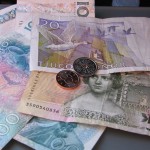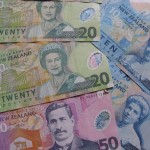US dollar climbed to session highs against its US rival on trading Friday, as the Institute for Supply Management (ISM) reported that its index of manufacturing activity climbed to the highest level since April 2011.
USD/CAD reached a session high at 1.0454 at 13:19 GMT, after which consolidation followed at 1.0450, gaining 0.18% for the day. Support was likely to be received at October 25th low, 1.0411, while resistance was to be met at October 31st high, 1.0490.
The Institute for Supply Management reported earlier today that the index, gauging manufacturing activity in the United States, rose to a reading of 56.4 in October, or the highest point since April 2011, following a reading of 56.2 in September. Experts had anticipated that the index will slow down to 55.1 in October. Values above the key level of 50.0 are an indication that activity in the sector has expanded. Motor vehicle sales and recovery in the housing sector provided support to production, while at the same time global markets began to pick up. Released figures imply that the brinksmanship over the US budget, which closed the federal government for 16 days in October, did little to hurt the rebound in manufacturing sector since the middle of the year, Bloomberg imparted. Cars and light trucks sold at a 15.2 million annualized pace in September, following a 16 million rate in August, which was the fastest since November 2007, Ward’s Automotive Group said. The sub-indexes of new orders and output remained above the 60.0 level for a third consecutive month, according to data by ISM.
The greenback was continuously supported also after on Friday James Bullard, Federal Reserve Bank of St. Louis President, said that in case labor market conditions in the country continued to improve, the central bank may indeed begin to scale back its asset purchases.
Meanwhile, yesterday Canadian dollar received a boost against major peers, after it became clear that nations Gross Domestic Product grew 0.3% in August on a monthly basis, exceeding the expected 0.1% gain. Major factor behind this figure has been the increased production of crude oil and natural gas during the month. In August 2013 compared to August 2012, nation’s economy expanded 2.0%, marking the fastest pace since July 2012, following the 1.5% increase in July, while analysts had projected that the GDP figure will increase 1.7%.
“It’s kind of an attractive vehicle, when it weakens 2, 3 percent, people like to take a shot at buying the bonds,” said Darcy Browne, managing director of currencies at Canadian Imperial Bank of Commerce’s CIBC World Markets unit, by phone from Toronto, cited by Bloomberg. “The Canadian gross domestic product was a little buoyant yesterday. It kind of was at the high end of everybody’s expectations, so I think that helped.”
Elsewhere, the loonie, as Canadian dollar is also known, was higher against the euro, with EUR/CAD cross falling 0.68% on a daily basis to trade at 1.4088 at 13:49 GMT. GBP/CAD pair was losing 0.64% to trade at 1.6639 at 13:51 GMT.





